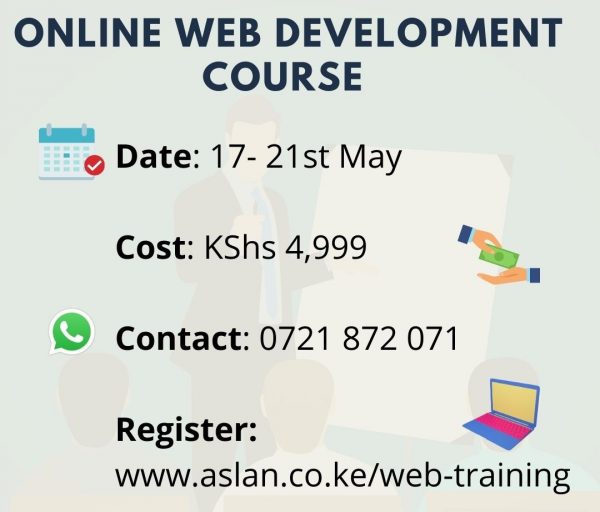
Social Media: The Fellowship of the Vile

While peace of mind is desired by most people, it can be elusive if you are constantly using social media. This is also the case if you follow the mainstream media, where negative news dominates the timelines.
I stopped actively following the news for this reason, because I do not find any benefit when my evening starts or ends with the information that a young man butchered his brother in a remote part of Kenya, followed by the information that a child died because a certain clinic in another remote part of Kenya lacked syringes. I know such things happen everyday but having to know about them every evening is not good for my peace of mind.
But I still use social media, and its effects seem to be worse.
Demons of Social Media
Social media has exposed some very dark sides of people. As soon as you log in, decency logs out, and you are exposed to some of the worst of human beings.
You are fat. You are short. You have a big forehead. I wish you were aborted. Stop using your head only as a cover for the neck…
Those are mean words to use in life, but not on social media. These are some of the posts that get likes and shares. People have pledged allegiance to violence and hate. They attack one another. They say mean things. They post profanity and insults. They insult innocent strangers and demean people they have no idea what they are going through.
They shame the poor, and the next moment, they promote mental health forums. It’s a paradox but who cares? That is social media.
Social Media exposes the lowest of the low.
Bloodthirsty
It is not just the demons of social media that traumatize me. It is the many applauders who seem to enjoy the violence.
There are people who are there only there to fan violence, then sit back to enjoy the wildfire. Those spewing venom end up with likes and followers. Because they cannot see and relate to the human beings behind the username, they find it easy to insult and attack.
They join the hate wagons even when they do not know what is happening. If an influencer insults you on social media, their bloodthirsty followers will follow through and bring it to your inbox.
Intelligent and Arrogant
We also have intelligent people who seem to have everything but empathy. Armed with wits, superior knowledge and cosmic pride, they demean and shame. When they see foolishness, they go ahead to highlight it in order to clear every doubt that the person is a fool. They show little grace or empathy. They thrive by demeaning.
Making Social Media a Positive Experience
There are the good sides of social media, but it does not come automatically. One must use it objectively, but I am yet to figure out what counts as objective.
I can block, I can choose who to follow, I can log in only when necessary, and I can mute some topics, but it is hard when some of the work you do depend on social media. The worst part is when you start acting like the people you dislike on social media.
I can relate this with what happens in real life. You can choose a good neighborhood where you are isolated from muggers, thieves, noisy people or just the people you do not like, but you cannot completely cut off the world. It is impossible.
Some part calls for one to flee, another one calls for one to have a thick skin.
It is not easy.
Web Development Course for Form Four Leavers

Fifteen years ago, creating a website was a preserve for a few techies who played with some code like a magician. This has largely changed.
Today, anybody with some level of commitment, focus and some will can create a website. The enabling factor is that most websites today do not need any coding at all, but ability to understand the platforms in which they are built. Thus, any willing person can create a website or a blog such as this one, with ease.
Aslan Academy is offering a course that gives form leavers web development skills.
Why Learn Web Design/Development
The ability to create websites and publish web content is a useful digital hack today. I have found myself doing this for my businesses, for other people, to communicate important information, or even for fun. I have launched and ran a business online, just because I could. I still design website today as a side hustle, and a simple website that takes me a few hours to put together can easily earn me KShs 10,000. I have friends who are always asking me to design their websites.
This course from Aslan is especially suited for high school graduates who want to explore the world of web design. It will give you enough knowledge to make a website such as this one, and give you a base from where you can venture into more advanced web design and development skills.
The course does not promise to make you a wizard in web development. Like any good skill, it takes time and practice to become an expert. But how can you become an expert when you do not know where to start? This course will give you the basics information and proper hands-on skills to build a website using WordPress and other popular website builders.
Course Details
Objective
Equip learners to create a website or blog (such as this one) without necessarily learning to code.
Requirements
- Computer
- Internet connection
- Basic Computer literacy
Course Duration
One Week
Cost
This course being offered at a discounted cost of KShs 4,999 for form four leavers.
Dates
Varied dates every month. Check the Course Page.
Mode of Delivery
Online
Registration
You can sign up for the course HERE.
Beware of this WhatsApp Scam

A socially engineered attack is taking over WhatsApp accounts. In the scam that is now going round in Kenya, WhatsApp users receive an SMS from WhatsApp with a code, then a WhatsApp message from one of their contacts asking them to send them the code which they ‘sent to them by mistake.’

While the WhatsApp message is genuine and appears to come from one of your contacts, the contact has had their WhatsApp hacked and it is a scammer who is controlling the account. If you forward the code provided, you are doomed.
The verification code that the hacker wants you to send is a One Time Password that will be used to register your WhatsApp on another number, or even set up a WhatsApp Business account. Once they do this you will lose access to your WhatsApp and although they will not access previous chats and conversation, they will have access to your groups, from where they can target more people because they have the contact.
They will use those contacts in the groups to initiate more hacks and use your WhatsApp to contact the new hacks to request that they forward the attackers the WhatsApp code that was sent to them by mistake. This nets more victims who fall for the scam.
I am not sure what the hackers are after, but they could make use of the personal data that they collect, or request your contacts to send them money.
What do you if you have already Shared the Code?
If you have received a request to share a code, the best you can do is to ignore the message and alert the person who was hacked to take action.
If you have been hacked, you end up losing access to your WhatsApp. The next course of action is to reinstall WhatsApp on your phone. This will deny the hacker access to your account and restore your WhatsApp to you.
How can you prevent such an attack from happening? You can set up a two factor authentication for your WhatsApp. This was, some will need a PIN in order to set up your WhatsApp on another phone. To do this, go to WhatsApp > Settings > Account > Two-step Verification.
The Evolution of Electricity and Home Appliances

In 1879, Thomas Edison had a light bulb moment – literally. He invented a working light bulb. It was a major disruption to a world that was used to expensive and dirty oil lamps. Only the rich could afford to stay up late at night burning the midnight oil. The world was on the brink of a revolution.
To make the invention work, several things needed to be done. One of them was a method of electrical production and distribution. In 1882, Edison switched on the first power station that would produce electricity and distribute it to neighboring factories. This was the beginning of the long journey towards commercializing electricity and a lot of work went into inventing and designing the infrastructure that would make that a success.
Transmission over long distances was a problem until Swedish Engineer Jonas Wenström came up with a solution that was in the form of a 3-phase AC current. This allowed for industries to be built away from Power generation sites, such as rivers. Prior to that, electricity needed to be produced near where it would be consumed and this would involve playing about with the location of the consumers (industries), or the power plants. Today, electricity can be transported over thousands of miles with minimal losses.
As electricity became a popular source of energy, one area that had a slow application was home appliances.
The Start of Home Appliances
Initially, electricity was being supplied in homes only for lighting purposes and it remained so for a long time. There were no electric appliances to be used at home. It was a lighting affair.
Appliances started showing up with the electric fan in 1890. Electric iron, vacuum cleaner, toaster, and a washing machine showed up. All these were primitive devices, very different from what we have today. The vacuum cleaner was so bulky that it needed at least two people to operate. It was the beginning of an age when people realized that they could use the newly available energy to make work easier at home.
The development followed an interesting path because houses were only wired for lighting. This means that all the appliances that were available would be screwed into the bulb holder. There were neither electric sockets/receptacles nor switches that could regulate the flow of power. Devices were meant to be unplugged when not in use.
With time, home appliances became more affordable, available, and safer to use. This necessitated planning for them, and building services providers started to design the house wiring in a way that could accommodate the appliances.
With the advent of consumer electronics, home appliances increased and today there are tens of appliances that are used at home. These include air conditioners, dishwashers, clothes dryers, drying cabinets, freezers, refrigerators, kitchen stoves, water heaters, washing machines, trash compactors, microwave ovens, and induction cookers.
Other smaller appliances include juicers, electric mixers, meat grinders, coffee grinders, deep fryers, herb grinders, food processors, electric kettles, waffle irons, coffee makers, blenders, dough blenders, rice cookers, toasters, and exhaust hoods. Consumer electronics include radio receivers, TVs, cameras, computers, smartphones, and many more.
Advancement in Home Wiring
House wiring has been standardized to allow for the adoption of various home appliances that may be needed. One of the needs today is to allow for smart devices that are interconnected and possibly connected to the internet.
However, the current wiring practices applied today are very rigid and possibly fit for the late 80’s. Even houses that are being built today fail to plan for the increasing number of appliances that are in use today and with little planning for smart devices. You find a decent house with only two sockets in the kitchen. In some cases, there are no decent places to plug in a washing machine without having to run extension cords around the house.
Even with simple devices like home theaters, one is forced to run cables under the seats and in awkward places. CCTV installations force one to start drilling and fitting conduits in places where they could have easily been provisioned for during the design. Getting the WiFi signal in different parts of the house is usually a hectic task.
It is like we are still living in the age when everything was plugged into the light bulb holder.
The Huduma Namba

Huduma Namba has been a running theme in Kenya for almost two years now. This is a biometric digital identification system for Kenyan Citizens, technically known as the National Integrated Identification Management Systems (NIIMS). It was aimed at creating a single source of person’s identity in Kenya with the aim of increasing access to government services and also reduces chances of identity theft.
The system would involve registration of all person aged six years and above in Kenya by the government, by collecting biometric and other data such as fingerprints retina and iris scan, contact information, family, profession and other biodata. This was b
Since its inception, there has been a number of challenges to the project and while the government started issuing the cards in October 2020, there is still a long way to go. First, we look at why this was started in the first place.
Why Identification?
Having a form of legal identity is important. Everyone needs a document or something demonstrate that they are what they say they are. Without such, it is almost impossible to identify oneself outside your local community and this effectively denies one access to many services. You cannot get a passport, you cannot open a bank account, you cannot register a SIM card and in an increasingly digital world, you have little options.
Today, more than 1 billion people in the world lack a form of a recognized ID.
This is why various global bodies have been pushing to get everybody a form of Identification. Article Six of the Universal Declaration of Human Rights states that “Everyone has the right to recognition everywhere as a person before the law.” This is also in Target 16.9 of the Sustainable Development Goals (SDGs), which seeks to provide legal identity for all by the year 2030.
The State of Identification in Kenya
In Kenya, we’ve had a form of identification in place – the National ID – which is mandatory for every Kenyan aged 18 years and above. This has always been very useful because it is a unique identifier for every person in the country, making it possible to identify people by their ID numbers. In places where such does not exist, chaos rule. Banks have to figure out which ‘John Doe’ made a bank deposit because there are many John Doe.
However, the system that currently exists in Kenya has a major limitation majorly because it is not digital. It involves information on paper, with a passport photo and a signature as the primary method of identification. There is also an image of the holder’s fingerprint, but this is also on paper and it is not easy to compare one’s fingerprint against a database of fingerprints held on paper. This is where a form of digital identification proves useful, and the government’s response to this was the Huduma Namba.
The Solution
In 2019, the government came up with a miscellaneous act to amend the Registration of Persons Act, allowing for the establishment of a biometric database of Kenyans – NIIMS. From the government, it was supposed to be a system with one card that holds all the information about the person such as driving license, NHIF information, birth registration, tax information and any other data held by government institutions.
Challenges in Implementation
The implementation of the project was at best chaotic and at worst, designed to fail. As Wainaina Mungai from SafeHouse Africa opines, Kenya needed the Huduma Namba, but not in the form that it was presented or the extent of data it sought to capture and store. It would help ensure the integrity of data and reduce the number of IDs required to access services. One challenge in the implementation was the lack of adherence to an enabling legal framework anchored in international best practice and treaties Kenya should ratify.
Limited public participation meant that the public was not fully aware of what the system was about, as well as the potential benefits of the project. Instead of educating people so that they could register based on the perceived benefits, the government resulted to threats, warning people that they may not receive some government services if they did not register.
This undermined the whole process because this is a major change to how people access government services and principles of change management should have been applied. Kenyan could have learnt from the difficulties experienced in Tanzania, India and Nigeria while implementing a national ID system. In all these places, it has taken quite a long time and it is unreasonable to expect that all Kenyans would quickly rush to register for a service they knew little about. The court cases in India dragged on for ten years.
The issue of privacy was also raised. At the start if the process, Kenya lacked the necessary laws to govern the use of the data that was being collected. This is data that could be used to profile people and it was not very clear what was the use of the data. There needed to be a clearly defined use for the data and the users should retain the ownership of the data. The government had also intended to collect DNA and location information, something that would be an infringement of privacy and would make the whole process even more suspicious. Luckily. This part was struck out by the court but damage had already been done.
There was also the challenge with security. This was a serious flaw because when you have biometric data centralized, you attract hackers who can easily get away with the data. The people handling the data could also pose a risk to the same, hence the need to have a platform that is secure, such as the one running on blockchain technology. This has been used in places like Estonia where they have a functioning digital ID. The challenge with biometric data is that it cannot be changed if breached. While one can easily change a password, they cannot change their fingerprint.
Another unintended consequence that could result from the Huduma Namba is exclusion; the exact opposite of what it intends to achieve. If there is one card that will be used to access all government service, lacking that card means that one is locked out from all such services. This was a concern raised by the Nubian community who lack ID cards, hence were not eligible to be registered for the Huduma Namba.
What Next?
No doubt, a functional digital ID is becoming increasingly necessary in a digital world. Kenya needs to take this route to fully take advantage of the digital revolution, but the process should be done right.
A research by The Engine Room titled ‘Understanding the Lived Effects of Digital ID: A Multi-Country Study’ argues that the process of obtaining a digital ID matters just as much as the end result. The policies that are establish to protect the rights of the people are also useless unless if they are operationalized. This calls for Kenya to rethink the implementation process in a way that the concerns raised are catered for and have a realistic timeline. It may be a few more years before we can have the Huduma Namba fully functional.
But the benefits would be great. Huduma Namba would lead to an easy way of accessing government services and would result to time and resources saved. The identification system would also benefit the private sector by making it easy to offer financial services to all people and greatly reduce the Know-Your-Customer process. Processes like applying for passports would be easier and shorter because one would not need to present the same data to the immigration department again. There would be no need of a complicated registration process in schools. All this and much more would translate to money saved.
As the global economy becomes increasingly digital, Huduma Namba might be the magic wand that will propel Kenya to benefit from data, but we still have a long way to go.